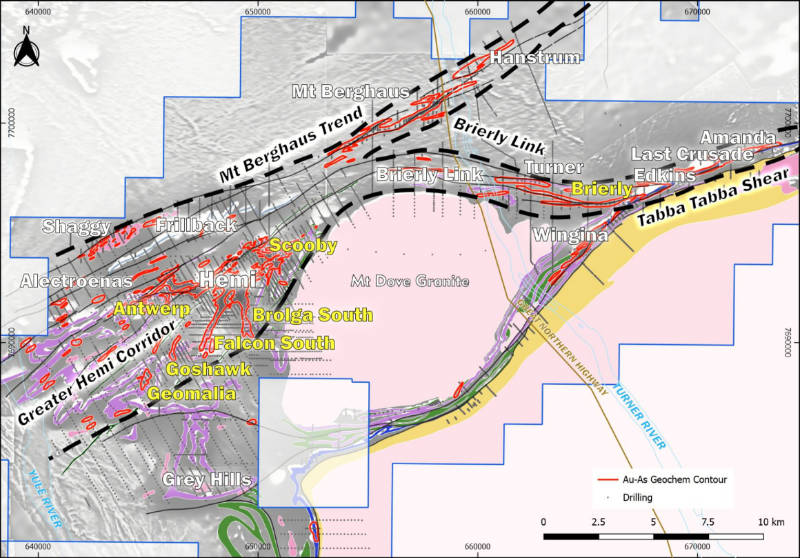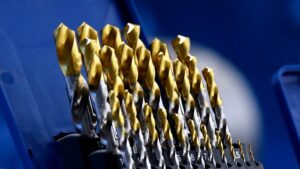De Grey drilling hints at more gold to be found at Hemi

Pic: Bloomberg Creative / Bloomberg Creative Photos via Getty Images
The Hemi discovery is already one of the most significant gold finds in recent history but, as De Grey’s latest drill results show, there’s plenty of room for growth.
Drilling has returned results such as 1m at 31.2 grams per tonne (g/t) gold from 195m at the Scooby target, as well as defining the new Geomalia and Goshawk prospects within the 15km long, 10km wide Greater Hemi corridor.
Notably, high-grade results were returned from the prospects with De Grey Mining (ASX:DEG) noting results of up to 1m at 10.6g/t gold from 161m at Geomalia, 1m at 7.57g/t gold at Goshawk.
Results of up to 1m at 9.7g/t gold from 80m were also returned at the historical Turner prospect.
These and other recent drill hits are a clear sign that there is room to grow the 6.8Moz resource at Hemi.
It also highlights the value of aircore drilling to identify new intrusions, gold zones and gold-arsenic anomalies that will then be followed up by deeper reverse circulation drilling.
“Recent aircore drilling has identified new prospective altered intrusions, anomalous gold zones and areas of encouraging multielement geochemistry within the 10km wide by 15km long corridor, east and west of Hemi,” technical director Andy Beckwith.
“The discovery and recent growth of the Diucon and Eagle deposits, below an area of relatively weak aircore geochemistry results, provides encouragement that further gold mineralisation will be discovered along the Greater Hemi corridor as drilling progresses.
“Infill aircore and deeper RC drilling will be undertaken based on ranked priorities and necessary heritage surveys. RC drilling has commenced at Antwerp immediately to the west of Diucon and Eagle to better test this prospective trend.”
Release of the scoping study for the broader Mallina gold project is also imminent with Beckwith saying that it would be released early next week.

Drill results
Aircore drilling has delineated a 2km by 2km area with anomalous gold and arsenic zones at the Scooby target.
Notably, while most aircore holes intersected prospective host intrusion with variable alteration, they stop at shallow depths of less than 60m where the bedrock becomes hard.
De Grey says this means that most of the area has not been tested below 60m depth, which when compared to Diucon and Eagle provides scope to discover further “blind” mineralisation at depth as drilling progresses.
First pass RC drilling has returned multiple high-grade hits, which provides encouragement for further drilling.
The company adds that while initial RC drilling at the Geomalia and Goshawk did not return wide mineralised zones, the results to date are encouraging enough to warrant follow-up drilling.
It adds that recent and historical aircore drilling at the Brierly Link and Turner prospects require further assessment with the recent knowledge gained at Hemi and follow-up drilling.
Follow-up work
De Grey plans to carry out RC drilling targeting encouraging new zones of intrusions and/or anomalous multielement geochemistry to test bedrock up to 200m below surface at the Antwerp, Scooby, Brierly Link and other targets.
Aircore drilling will also continue to test areas within the prospective corridors and regional targets while heritage clearance surveys will be carried out over prospective areas to allow drilling at closer line spacing.
This article was developed in collaboration with De Grey Mining, a Stockhead advertiser at the time of publishing.
This article does not constitute financial product advice. You should consider obtaining independent advice before making any financial decisions.
Related Topics

UNLOCK INSIGHTS
Discover the untold stories of emerging ASX stocks.
Daily news and expert analysis, it's free to subscribe.
By proceeding, you confirm you understand that we handle personal information in accordance with our Privacy Policy.








